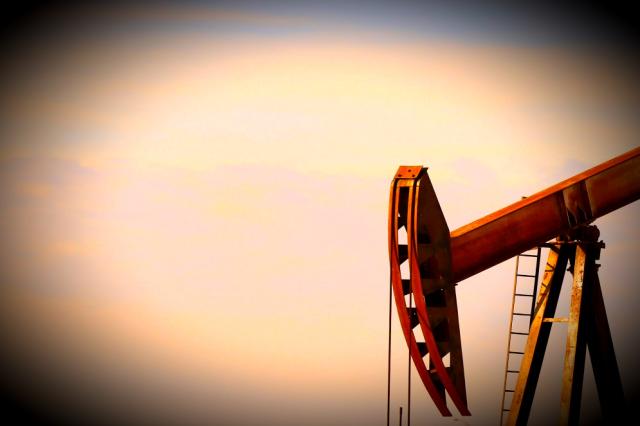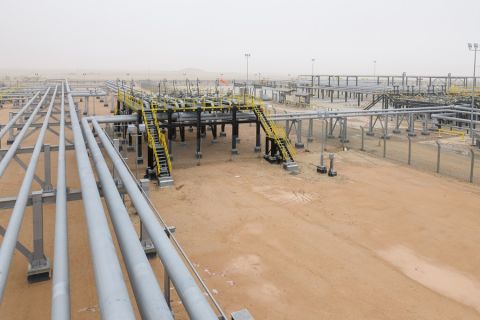
(Source: Shutterstock.com)
[Editor's note: A version of this story appears in the February 2020 edition of Oil and Gas Investor. Subscribe to the magazine here.]
Schlumberger Ltd. chairman Mark Papa told an audience at the International Petroleum Technology Conference on Jan. 13 that he expects shale production to grow by just 400,000 barrels per day (bbl/d) in 2020, according to the Journal of Petroleum Technology.
This echoes comments made in November by Centennial Resource Development Inc. CEO Mark Papa, who said at the time, “I now think that 2020 year-over-year oil growth will be roughly 400,000 barrels per day.”
It’s good to see that they agree. Papa’s reasoning, regardless of the corporate hat he’s wearing at any given time, is that shale oil is a finite resource.
“Most people will ascribe the low U.S. growth to capital discipline, but I think that the larger reason is what I’ve been talking about for several years—the shift to Tier 2 and 3 drilling locations in all shale plays and increasing parent-child issues in the Permian,” he said during Centennial’s November earnings call.
Wood Mackenzie, which Papa does not work for, also forecasts U.S. Lower 48 crude and condensate production, with a slightly higher growth forecast of 470,000 bbl/d in 2020. That compares with 2019 year-overyear growth of 1.1 MMbbl/d.
In case this looks like a green light to start pumping out more oil, a quick check with investors confirms, yes, they still don’t like oil and gas companies. What’s interesting, however, is that even they admit oil and gas companies are probably worth more than the current share prices allow.
An IHS Markit survey of institutional and private-equity investors, with a combined $98 billion of energy assets under management, found that 63% of respondents agree that the oil and gas sector is currently undervalued. Writing about the survey results on Jan. 13, IHS Markit vice chairman Daniel Yergin and senior vice president ambassador Carlos Pascual noted that while the stock market has boomed, the energy sector has been the “worst performing sector over the last decade.”
“This is particularly ironic, since U.S. oil and gas production has boomed over the same period, making the United States the world’s largest producer of oil and gas—and making the country virtually self-sufficient,” they wrote.
Interestingly, they also found that investors in renewables resulted in subpar returns, with only a few investors citing success in the space, “noting the importance of selectivity and timing.” Yergin and Pascual also say oil and gas investment isn’t hurt by environmental, social and governance considerations.
Perhaps more telling is that two-thirds of respondents believe that there is potential for the industry to experience a “cyclical reversion” in the stock market and come back into favor with equity investors. To ward off any undue optimism: This may be the equivalent of saying Smurf-Berry Crunch could make a comeback as the greatest breakfast cereal of all time. Should it? Yes, obviously. But will it?
Papa, for his part, won’t speculate on what “growth-challenged” shale plays would mean for the oil markets or investors— though he does offer that “the shale plays are going to not be as prolific as people are currently alleging that they are.”
Clearly, Papa wants to crank up production this year. The problem is that Wall Street is unfriendly to outspending cash flow. So Centennial may make a deal that Papa would not have contemplated during his time as chairman and CEO of EOG Resources Inc.
“If you look back at the background of when I was running EOG, we never monetize any of our assets in-house, any of our processing assets or anything like that,” he said.
“We followed the same philosophy” at Centennial, he said. Papa said he believed keeping assets in-house leads to a better valuation.
“But times have changed here and clearly, there’s an investor fixation with cash-flow outspend,” he said.
In that light, Centennial is considering a divestiture of its southern Delaware Basin water infrastructure in Reeves County, Texas. The company operated 12 saltwater disposal wells in November and has a capacity to move 379,000 bbl/d of water. Centennial owns about 300 miles of pipeline to support its saltwater disposal system.
Papa said that other companies have looked at the assets in the past but that they weren’t for sale.
“Still, facing a potential cash-flow outspend in 2020, we are saying, ‘well, one way to solve that problem is to monetize SWD. And in fact, it would potentially solve it for multiple years down the road.’”
Times, indeed, have changed.
Recommended Reading
Paisie: Crude Prices Rising Faster Than Expected
2024-04-19 - Supply cuts by OPEC+, tensions in Ukraine and Gaza drive the increases.
Oil Dips as Demand Outlook Remains Uncertain
2024-02-20 - Oil prices fell on Feb. 20 with an uncertain outlook for global demand knocking value off crude futures contracts.
Paisie: Economics Edge Out Geopolitics
2024-02-01 - Weakening economic outlooks overpower geopolitical risks in oil pricing.
Oil Market Shifting Back to Supply/Demand
2024-03-08 - Stratas Advisors' John Paisie forecasts the price of Brent crude to increase during the second and third quarters of this year and move toward $90/bbl.
Oil Rises After OPEC+ Extends Output Cuts
2024-03-04 - Rising geopolitical tensions due to the Israel-Hamas conflict and Houthi attacks on Red Sea shipping have supported oil prices in 2024, although concern about economic growth has weighed.




